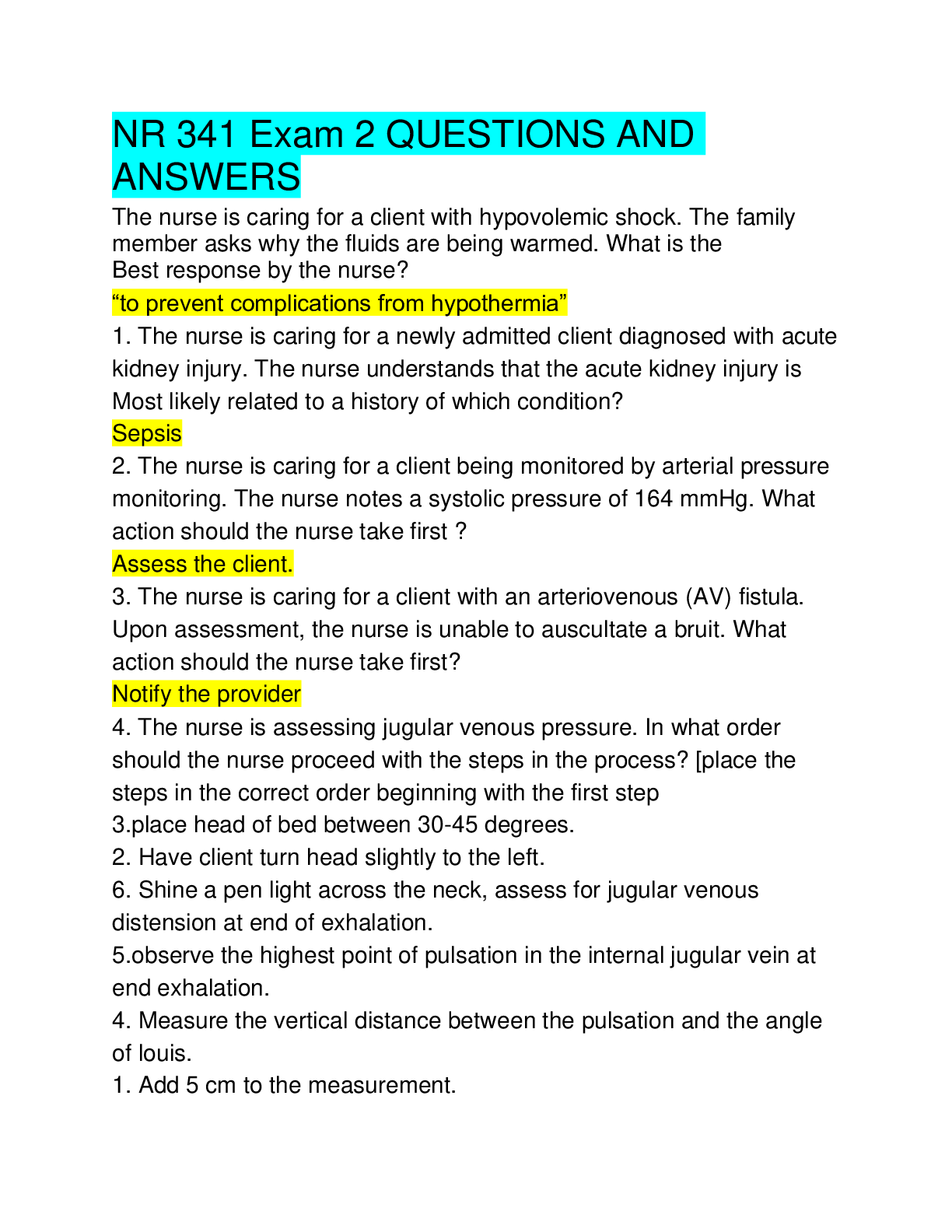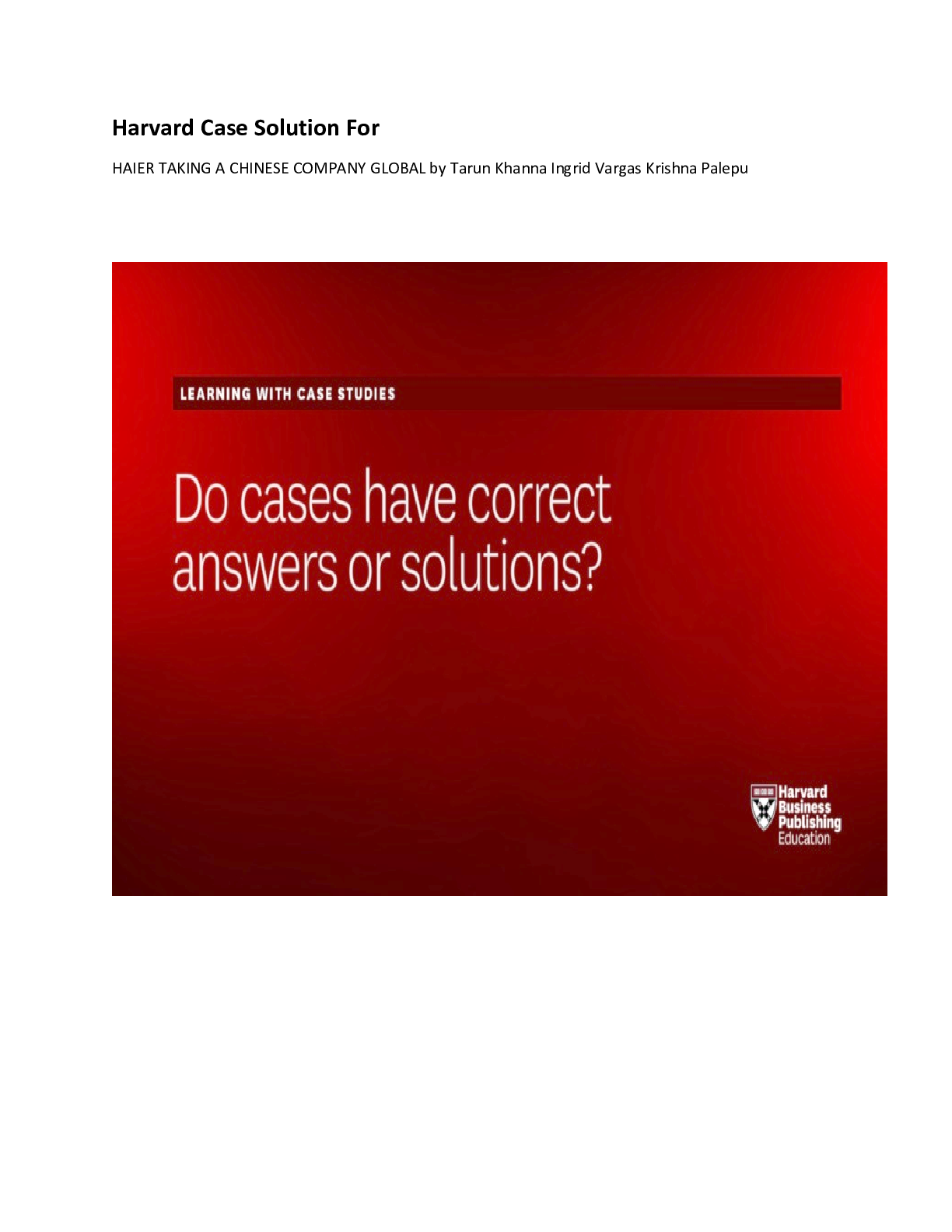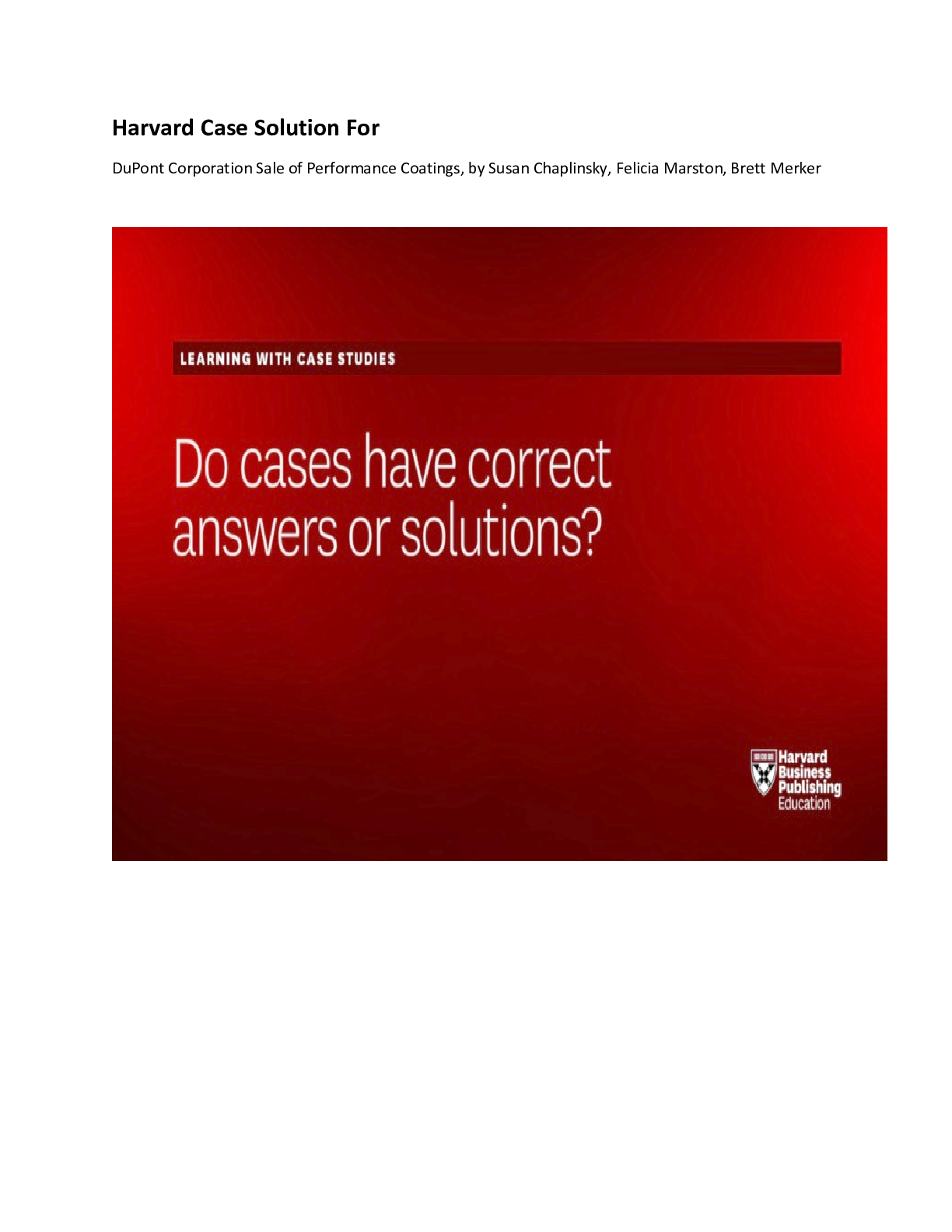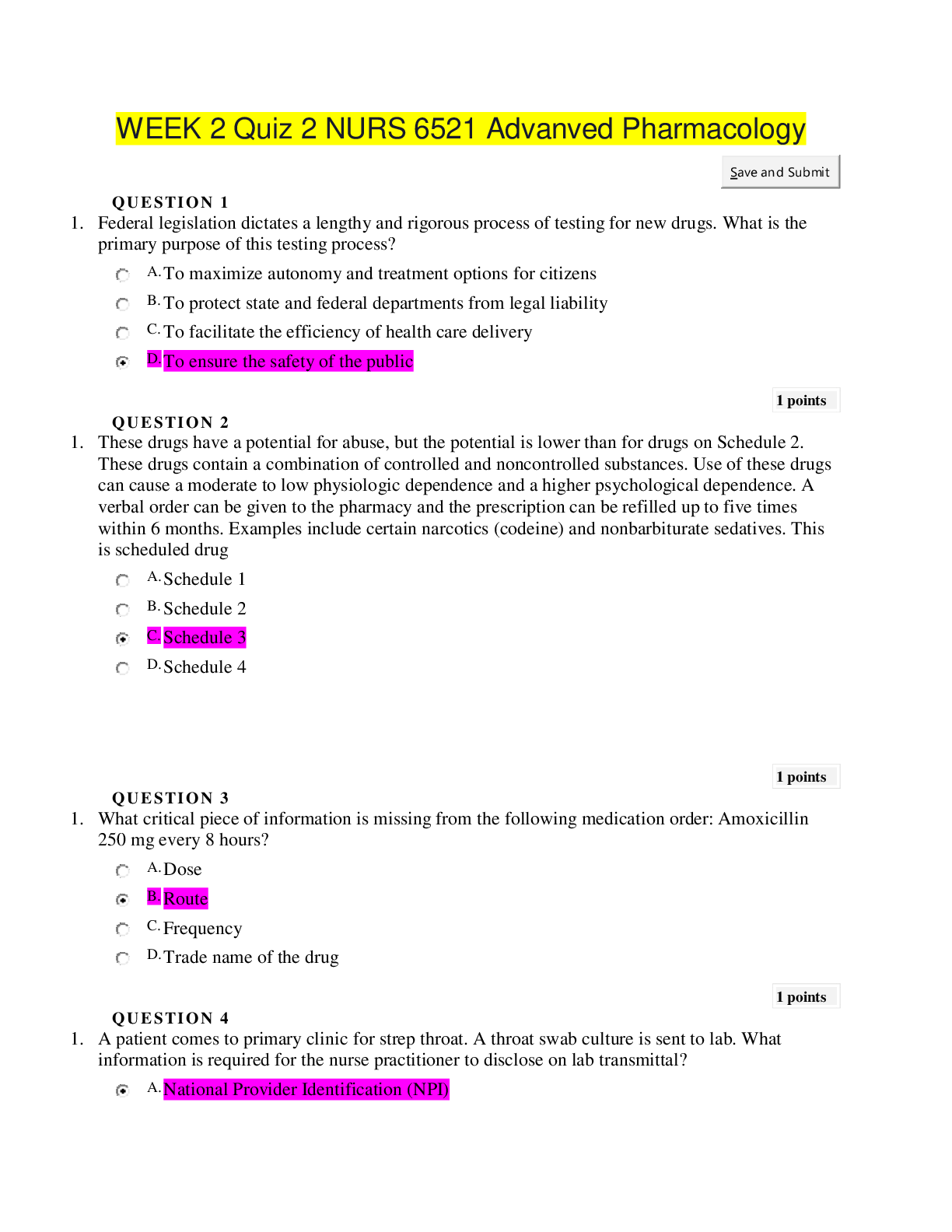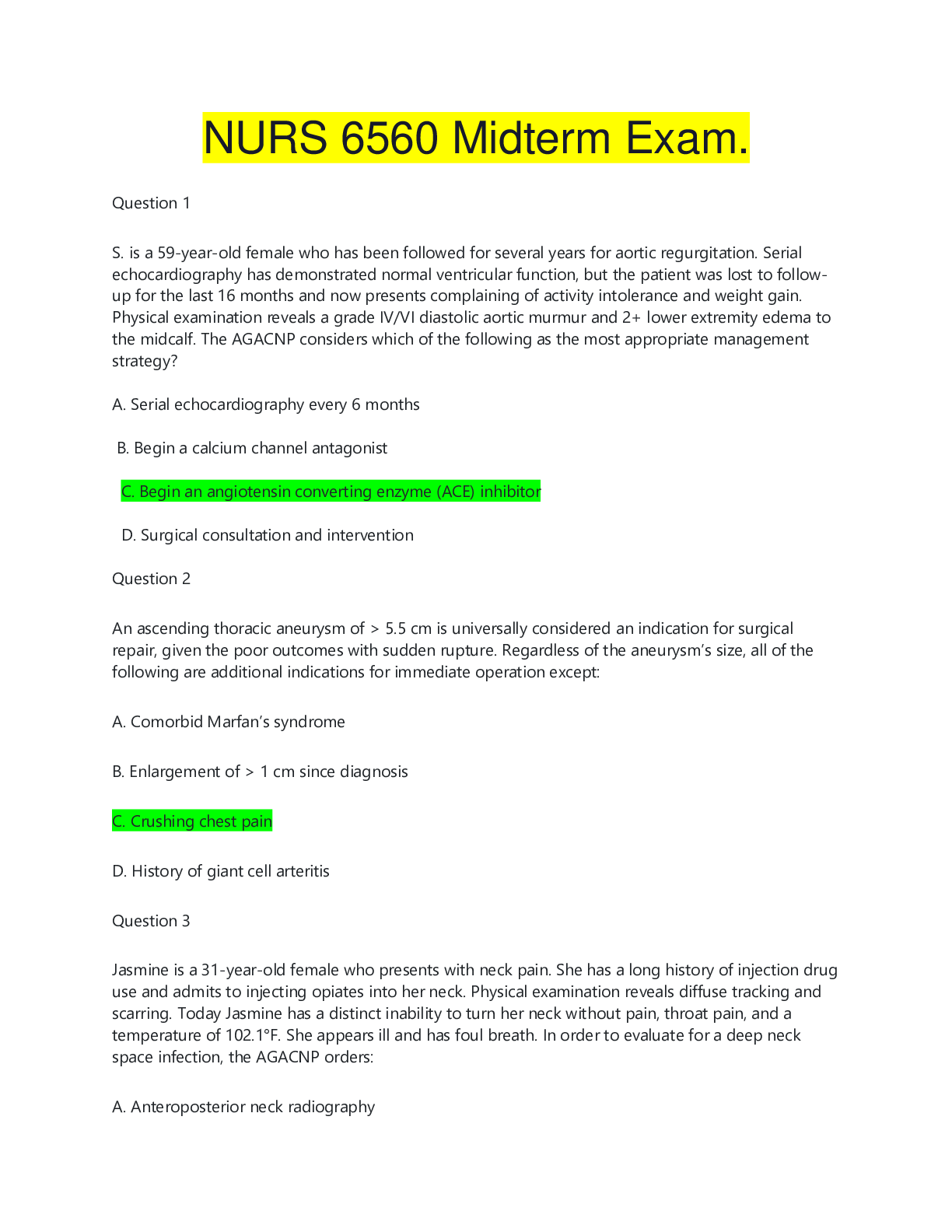ECON 102 QUIZ 1 QUESTIONS AND ANSWERS | LATEST ANSWERS
Document Content and Description Below
ECON 102 QUIZ 1 QUESTIONS AND ANSWERS 1. What is the primary goal of financial management? A) Increased earnings B) Maximizing cash flow C) Maximizing shareholder wealth D) Minimizin... g risk of the firm 2. The partnership form of organization A) avoids the double taxation of earnings and dividends found in the corporate form of organization. B) usually provides limited liability to the partners. C) has unlimited life. D) simplifies decision making. 3. Increased productivity due to technology has A) increased corporations' reliance on debt for capital expansion needs. B) created larger asset values on the firm's historical balance sheet. C) made it cheaper (in terms of interest costs) for firms to borrow money. D) helped to keep corporate costs in check. 4. Insider trading occurs when A) someone has information not available to the public which they use to profit from trading in stocks. B) corporate officers buy stock in their company. C) lawyers, investment bankers, and others buy common stock in companies represented by their firms. D) any stock transactions occur in violation of the Federal Trade Commissions restrictions on monopolies. 5. When a firm's earnings are falling more rapidly than its stock price, its P/E ratio will: A) remain the same B) go up C) go down D) could go either up or down 6. The net worth of a firm A) is usually the same as the firm's market value. B) is based on current asset costs. C) is based on current liabilities. D) none of the above. 7. A statement of cash flows allows a financial analyst to determine A) whether a cash dividend is affordable. B) how increases in asset accounts have been financed. C) whether long-term assets are being financed with long-term or short-term financing. D) all of the above 8. A firm has $200,000 in current assets, $400,000 in long-term assets, $80,000 in current liabilities, and $200,000 in long-term liabilities. What is its net working capital? A) $120,000 B) $320,000 C) $520,000 D) none of the above 9. The ______________ method of inventory costing is least likely to lead to inflation-induced profits. A) FIFO B) LIFO C) Weighted average D) Lower of cost or market 10. The Bubba Corp. had net income before taxes of $200,000 and sales of $2,000,000. If it is in the 50% tax bracket its after-tax profit margin is: A) 5% B) 12% C) 20% D) 25% 11. XYZ's receivables turnover is 10x. The accounts receivable at year-end are $600,000. The average collection period is 90 days (3 months). What was the sales figure for the year? A) $60,000 B) $6,000,000 C) $24,000,000 D) none of the above 12. A firm has total assets of $2,000,000. It has $900,000 in long-term debt. The stockholders equity is $900,000. What is the total debt to asset ratio? A) 45% B) 40% C) 55% D) none of the above 13. Required production during a planning period will depend on the A) beginning inventory of products. B) sales during the period. C) desired level of ending inventory. D) all of the above 14. XYZ Co. has forecasted June sales of 600 units and July sales of 1000 units. The company maintains ending inventory equal to 125% of next month's sales. June beginning inventory reflects this policy. What is June's required production? A) 1100 units B) -0- units C) 500 units D) 400 units 15. The difference between total receipts and total payments referred to as A) cumulative cash flow. B) beginning cash flow. C) net cash flow. D) cash balance. 16. In developing the pro forma income statement we follow four important steps: 1) compute other expenses, 2) determine a production schedule, 3) establish a sales projection, 4) determine profit by completing the actual pro forma statement. What is the correct order for these four steps? A) 1,2,3,4 B) 4,3,2,1 C) 2,1,3,4 D) 3,2,1,4 Difficulty: Medium Type: Conceptual Chapter 5 Operating and Financial Leverage 17. In break-even analysis the contribution margin is defined as A) sales minus variable costs. B) sales minus fixed costs. C) variable costs minus fixed costs. D) fixed costs minus variable costs. Difficulty: Easy Type: Memorization 18. Firm A employs a high degree of operating leverage; Firm B takes a more conservative approach. Which of the following comparative statements about firms A and B is true? A) A has a lower break-even point than B, but A's profit grows faster after the break-even. B) A has a higher break-even point than B, but A's profit grows slower after the break-even. C) B has a lower break-even point than A, but A's profit grows faster after break-even. D) B has a lower break-even point than A, and profit grows the same rate for both companies after the breakeven point. Difficulty: Hard Type: Application 19. Heavy use of long-term debt may be beneficial in an inflationary economy because A) the debt may be repaid in more "expensive" dollars. B) nominal interest rates exceed real interest rates. C) inflation is associated with the peak of a business cycle. D) the debt may be repaid in "cheaper" dollars. Difficulty: Medium Type: Conceptual 20. Under which of the following conditions could the overuse of financial leverage be detrimental to the firm? A) Stable industry B) Cyclical demand for the firm's products. C) Upswing of business cycle. D) Low interest cost compared to return on assets Difficulty: Medium Type: Application Chapter 6 Working Capital and the Financial Decision 21. Risk exposure due to heavy short-term borrowing can be compensated for by A) carrying highly liquid assets. B) carrying illiquid assets. C) carrying longer term, more profitable current assets. D) carrying more receivables to increase cash flow. Difficulty: Medium Type: Conceptual 22. When actual sales are greater than forecasted sales A) inventory will decline. B) production schedules might have to be revised upward. C) accounts receivable will rise. D) all of the above Difficulty: Medium Type: Application 23. Yield curves change daily to reflect A) changing conditions in the money and capital markets. B) new inflation expectations. C) changing conditions in the overall economy. D) all of the above. Difficulty: Medium Type: Conceptual 24. Retail companies like Target and Limited Brands are more likely to have A) stable sales and earnings per share. B) cyclical sales but less volatile earnings per share. C) cyclical sales and more volatile earnings per share. D) cyclical sales but stable accounts receivable and inventory. Difficulty: Easy Type: Conceptual [Show More]
Last updated: 2 years ago
Preview 1 out of 9 pages

Buy this document to get the full access instantly
Instant Download Access after purchase
Buy NowInstant download
We Accept:

Reviews( 0 )
$13.00
Can't find what you want? Try our AI powered Search
Document information
Connected school, study & course
About the document
Uploaded On
Feb 17, 2021
Number of pages
9
Written in
Additional information
This document has been written for:
Uploaded
Feb 17, 2021
Downloads
0
Views
112


